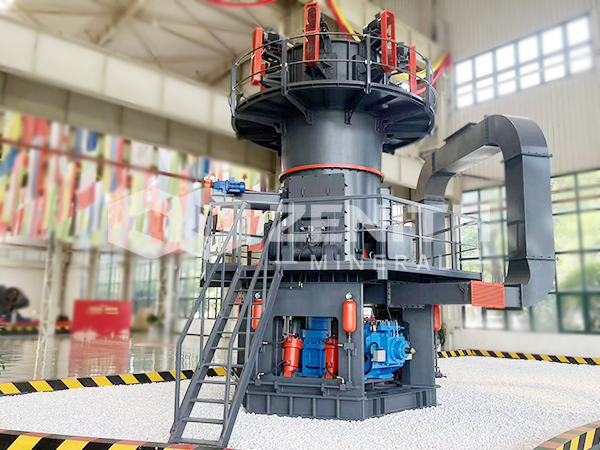Overview
LUM Ultrafine Vertical Grinding Mill adopts the latest Taiwan grinding roller technology and German powder separating technology. LUM Ultrafine Vertical Grinding Mill is mainly used for the ultrafine grinding of calcite, marble, limestone, talc, dolomite, barite, kaolin, wollastonite, gypsum, feldspar, pyrophylite and other non-metallic mineral ores.
Features
1. High Purity of Material
LUM Ultrafine Vertical Grinding Mill can effectively control the product size, chemical composition and iron content, and ensure the purity and whiteness of finished materials.
2. Energy-saving & Economical
LUM Grinding Mill can accurately control grinding pressure, speed and other parameters. Compared with ordinary mills, the energy consumption is reduced by 30%-50%.
3. Easy to Maintain & Operate
LUM Ultrafine Vertical Grinding Mill adopts reversible structure. With the hydraulic adjustment system, vulnerable parts can be easily and quickly repaired and replaced.
4. Environmentally Friendly
LUM Ultrafine Vertical Grinding Mill is sealed and operates under negative pressure, characterized by no dust spillover, small vibration of equipment, low noise, and more environmentally friendly production.
Working Principle
The materials drop on the grinding plate center through the screw feeder and evenly move outwards under the action of centrifugal force of the rotating grinding plate driven by the reducer; Large materials are crushed and ground by the grinding rollers when passing through the grinding area, while smaller materials form a material bed by extrusion for further inter granular crushing. The crushed materials continue to move towards the mill edge until being taken into the classifier by the air flow from the air inlet. The powder particles failing to meet the particle size requirement fall back on the grinding plate for further grinding while the qualified powder particles are collected in the pulse dust collector with the air flow and discharged as finished products. However, the iron blocks and other sundries mixed in the materials move along with the materials towards the edge of the grinding plate due to their own weight. They fall into the lower chamber of the mill and then be discharged out of the mill through the slag discharge opening by the scraping plate.








